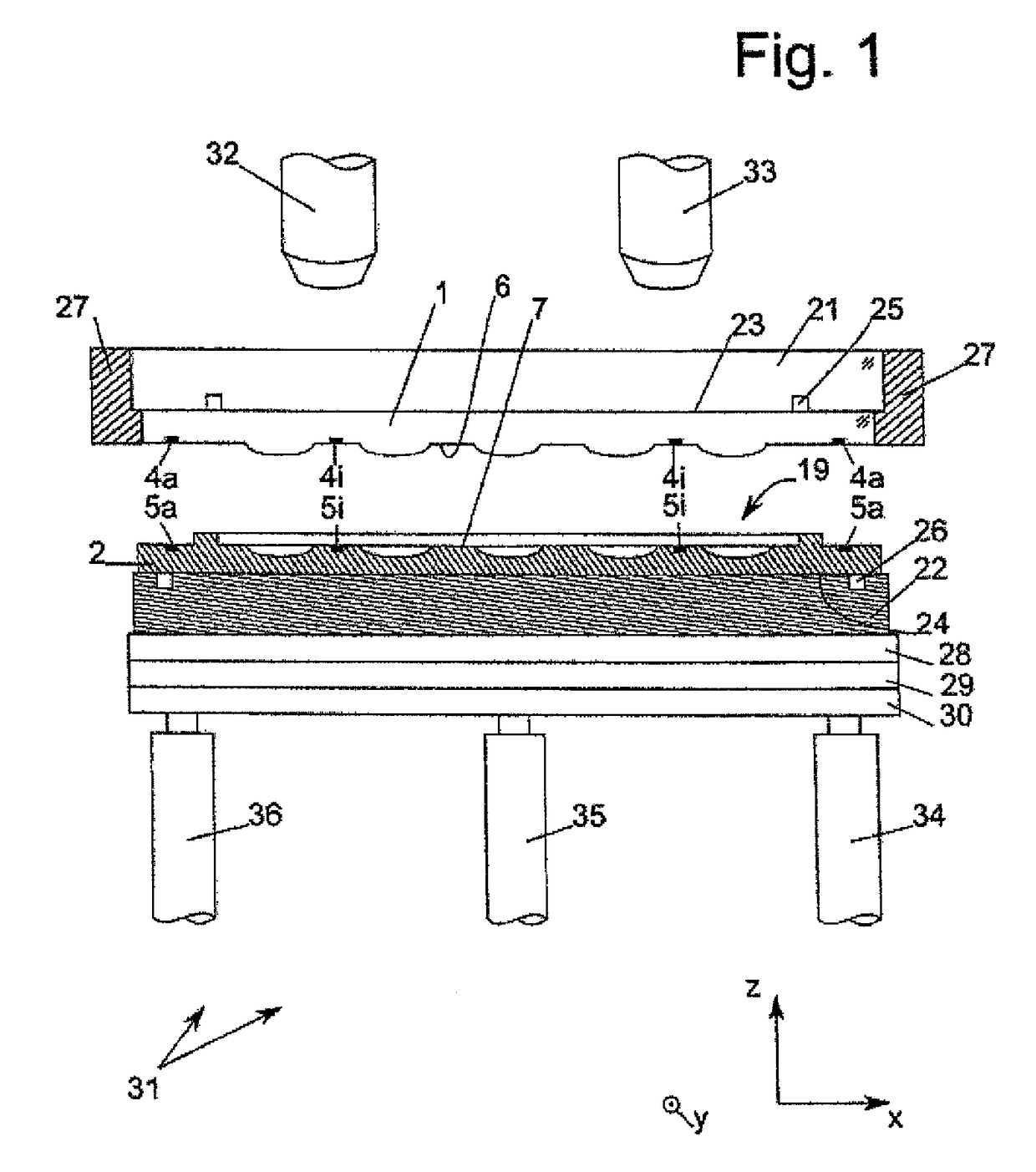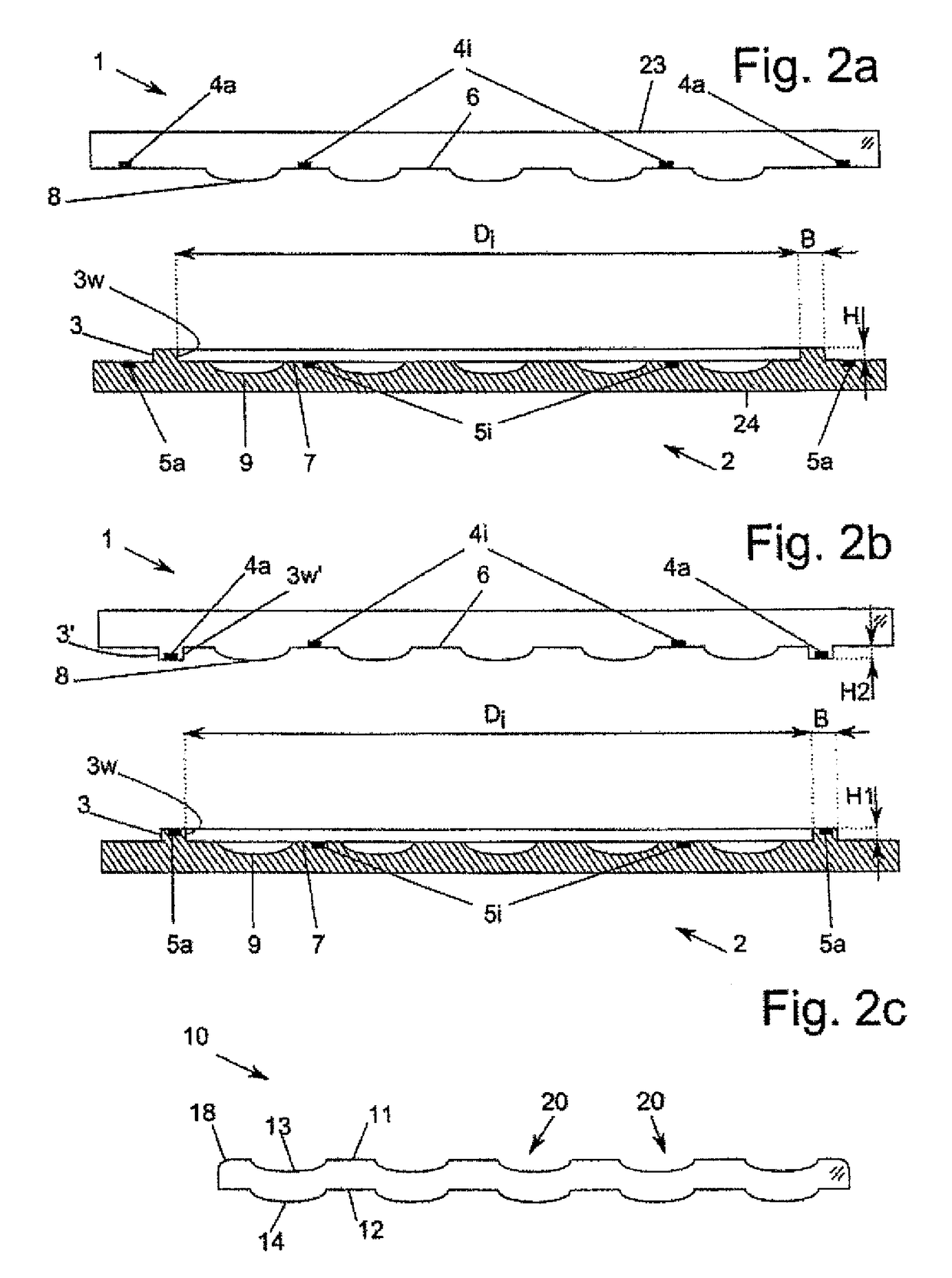Die tool, device and method for producing a lens wafer
- Summary
- Abstract
- Description
- Claims
- Application Information
AI Technical Summary
Benefits of technology
Problems solved by technology
Method used
Image
Examples
Embodiment Construction
[0044]In the figures, advantages and features of the invention are characterized with these identifying reference numbers in each case according to the embodiments of the invention, whereby components or features with the functions that are the same or that act the same are characterized with identical reference numbers.
[0045]In FIG. 1, a system that consists of a device according to the invention with a die tool according to the invention is shown. The die tool consists of a first die 1 and a second die 2, and the die tool is shown in detail in a first and second embodiment according to FIGS. 2a and 2b and further described below. In FIG. 1, the die tool is used in the device according to the embodiment shown in FIG. 2a.
[0046]The first die 1 is fixed on its first holding side 23, in particular horizontally, by at least one vacuum strip 25 on a first holding system 21. The first holding system 21 is fixed rigidly and as vibration-free as possible by a particularly annular, preferab...
PUM
| Property | Measurement | Unit |
|---|---|---|
| Force | aaaaa | aaaaa |
| Area | aaaaa | aaaaa |
Abstract
Description
Claims
Application Information
 Login to View More
Login to View More - R&D
- Intellectual Property
- Life Sciences
- Materials
- Tech Scout
- Unparalleled Data Quality
- Higher Quality Content
- 60% Fewer Hallucinations
Browse by: Latest US Patents, China's latest patents, Technical Efficacy Thesaurus, Application Domain, Technology Topic, Popular Technical Reports.
© 2025 PatSnap. All rights reserved.Legal|Privacy policy|Modern Slavery Act Transparency Statement|Sitemap|About US| Contact US: help@patsnap.com



